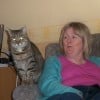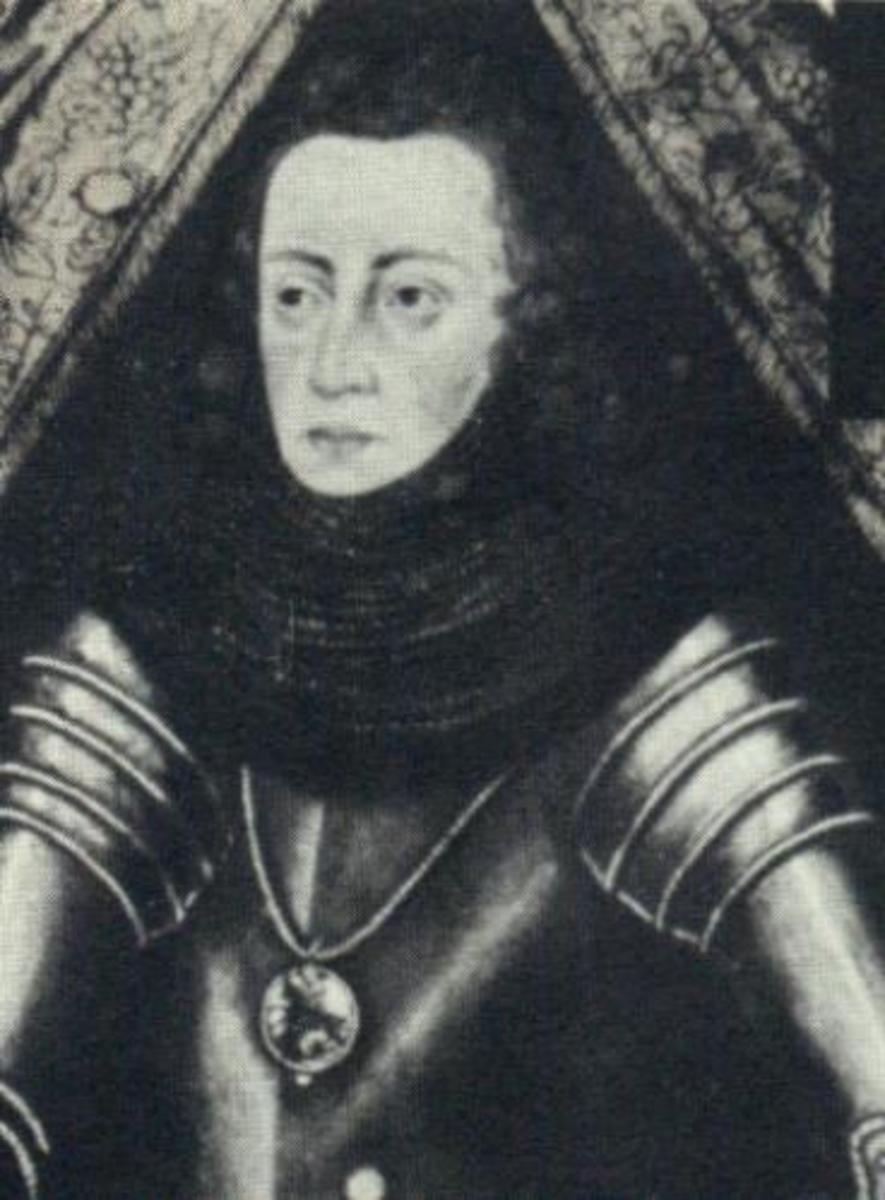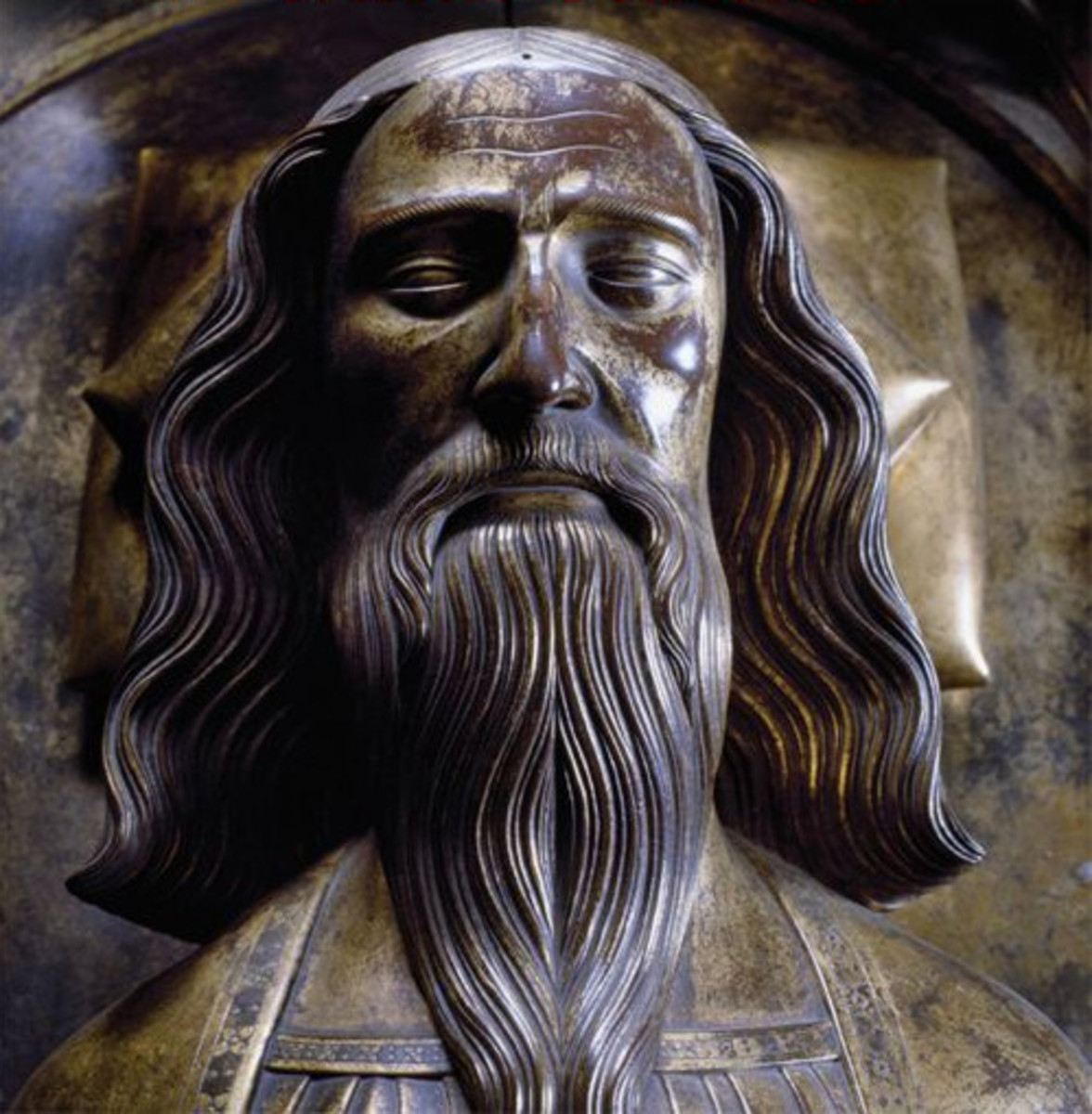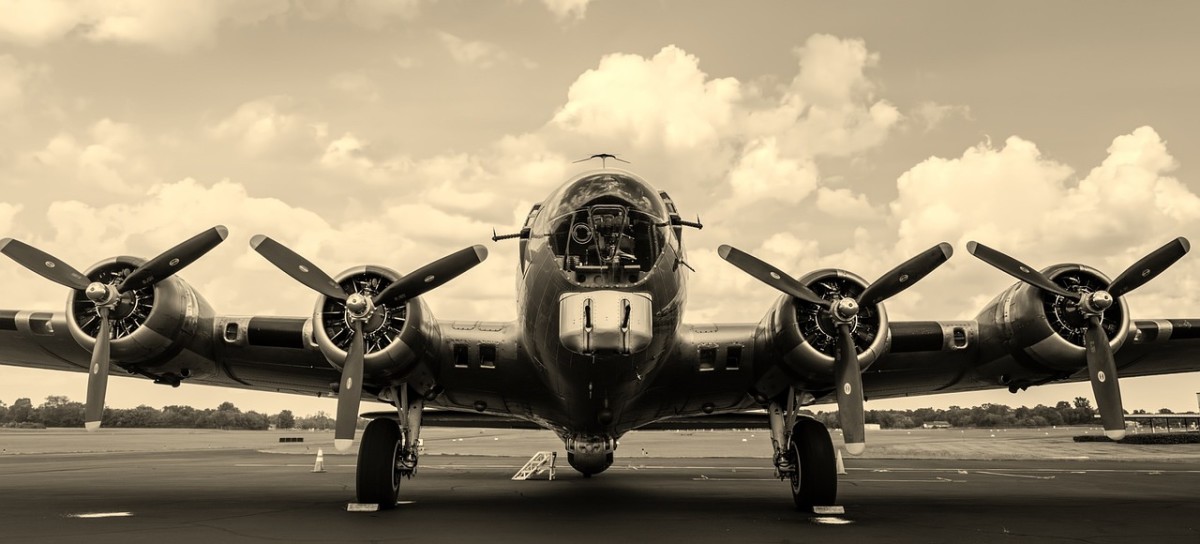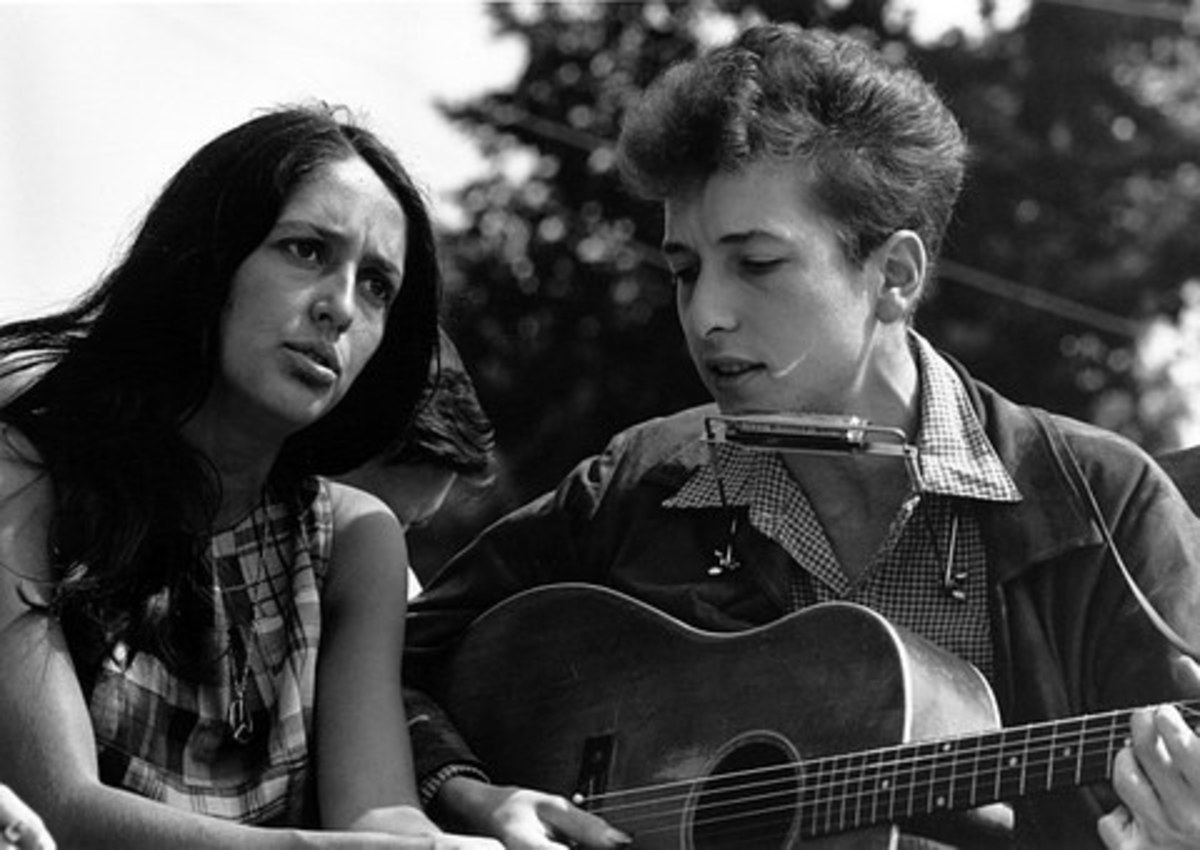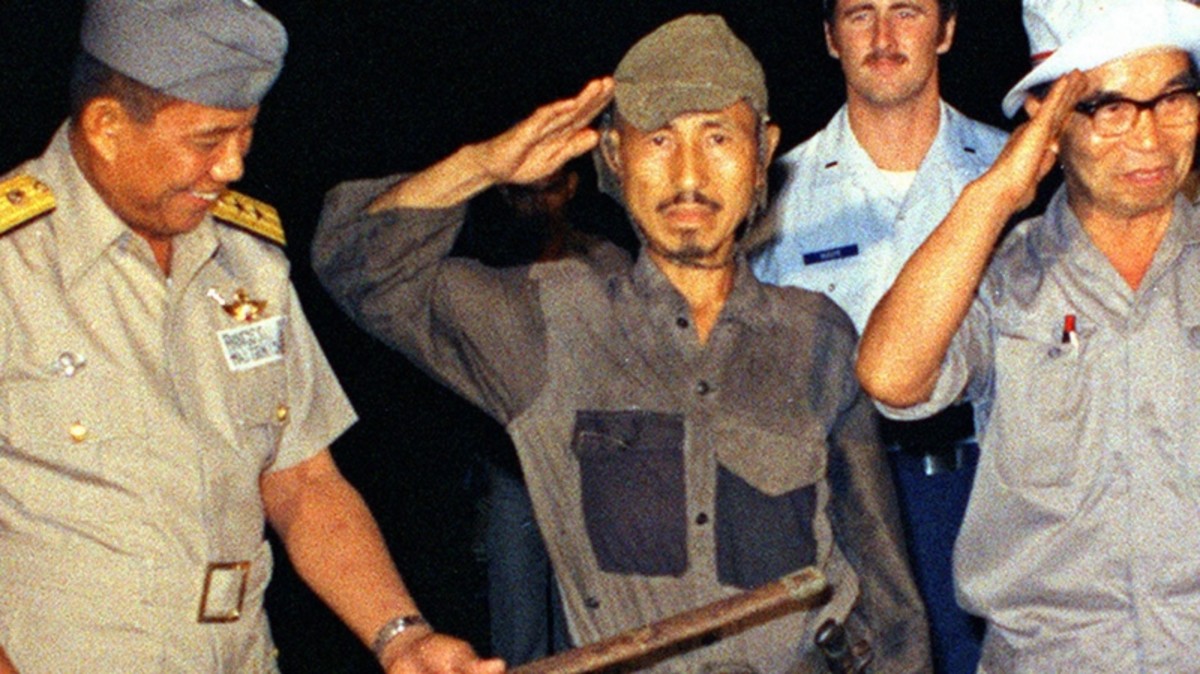- HubPages»
- Education and Science»
- History & Archaeology»
- History of the Modern Era
An unexpected King- George V1
Albert Frederick Arthur George was born on 14th December 1895. He was named after his great grandfather, Prince Albert the consort of Queen Victoria who had died on that date many years earlier. The baby became affectionately known as Bertie.
The young prince had an older brother, Edward and they were largely brought up by household servants. Although their father, the Duke of York, later King George V, tried to spend what we would now call “quality time” with his children, he disciplined them rather as if he were still in command of a naval ship. The young Prince Albert became a shy boy, especially near his father and developed a stammer as a teenager. He was happy to hide behind his elder brother Edward and his rather pretty sister, Mary.
The children were educated at home; Albert was left handed but was forced to write with his right hand and to add to his woes was made to wear splints for long periods in order to cure his “knock knees”.
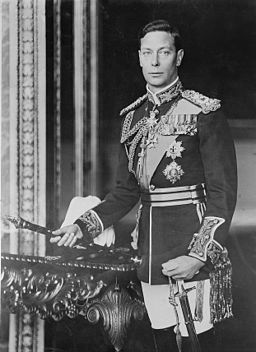
George joins the navy- aged just 11 years
In 1907 aged just 11 years old, Albert joined the naval cadets at Osborne. He managed to pass the examination board in 1909 despite being a very nervous candidate. Bertie entered the navy with 69 other 13 year old boy cadets, taking time to settle in as his status and stammer did not endear him to the other boys. Despite this he did make friends and these boys then men, remained his friends for life. Passing out bottom of his class, Bertie was sent to Dartmouth to prepare for his naval career. In the final stages of his naval training he joined the Cruiser, “Cumberland” travelling to the West Indies and Canada. He became a midshipman, the lowest ranking officer but despite this he never quite managed to conquer his sea sickness.
War Service
Bertie did not see the beginning of the war as he was rushed home suffering from a gastric illness which was believed to be appendicitis. By 1915 the gastric attacks were becoming more pronounced and Bertie was confined to desk duties. In May 1916 the newly promoted sub lieutenant was deemed fit to return to sea and took part in the Battle of Jutland on HMS Collingwood. In May 1917 he returned to sea on the battleship HMS Malaya but at last a reason for his gastric trouble was found to be a duodenal ulcer and an operation was needed.
Towards the end of World War One the Royal Air Force was established and Bertie was sent to Cranwell with the Royal Naval Air Squadron, moving to the cadet school at St. Leonards in July 1918, before briefly seeing from the ground only, aerial warfare near Nancy when he was on General Trenchard’s staff.
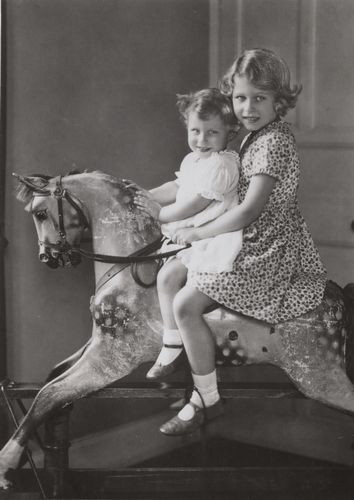
A post war career is sought
When the war ended Bertie was faced with a common dilemma, what did he do now? The prince learned to fly, becoming the first member of the family to qualify as a pilot, but he was forbidden to fly solo by his doctors, even on his proficiency test. After his flying lessons his father , now George V, sent him up to Cambridge to study for a year, reading, history, economics and civics. He enjoyed little of the student life as he lived out of college and normal student activities such as punting on the River Cam were often interrupted by state occasions that his father insisted he attend.
Duke of York
In 1920 Bertie was given the title of “Duke of York” and in April 1923 he married Lady Elizabeth Bowes Lyon at Westminster Abbey- an occasion which lightened the mood of the country as Lloyd George’s coalition government had just collapsed. The couples first child was born on 21st April 1926 and christened Elizabeth Alexandra Mary and their second daughter Margaret Rose was born in August 1930. Bertie and Elizabeth performed a number of state visits before their children were born; In October 1923 to the Balkans, 1924 to Northern Ireland and in 1925 to East Africa. In 1927 the royal family went by sea to Australia and New Zealand to open parliament. The visit was a success the people loved the couple where Bertie was viewed as a charming man without pomposity and his wife was regarded as a charming lady. Part of the success of the visit was his increased confidence caused by the loss of his stammer. By this point his stammer had all but disappeared. Whilst in London he had seen an Australian therapist, Lionel Logue who taught him techniques of breathing in a rhythm and gave him the personal responsibility to do it. Now his stammer only returned when he was very tired, ill or emotionally drained. This was the last foreign tour that his father allowed him to do.
A quiet life
The Inter War years saw a marked depression in the economy and high levels of unemployment. The Duke of York became patron of an organisation the Maurice Hostel settlement that developed into the Industrial Welfare Society. He took an interest in the working lives of normal people and visited many places of work, often precipitating an improvement in working conditions simply because a visit was intended. He believed that if royalty were not seen to take an interest in the public then there would be no defence to calls for a republic.
In 1931 the Duke and Duchess of York moved to the Royal Lodge in Windsor Great Park and lived there quietly through the difficult years of the depression. Their little family grew in love and was held together by the Duchess. They were not involved much in society or Royal arrangements- they lived a quiet and aristocratic life.
King Edward V111th
Following the death of his father King George, Prince Edward was proclaimed king on 20th January 1936. Edward had outshone his brother in everything he did though his father deplored his flippancy and general levity which was totally in contrast to Bertie. King Edward was unmarried but was seeing an American married woman. Mrs Simpson’s divorce came through in October 1936 and at this point it was clear that Edward wanted to marry Mrs Simpson and that he was prepared to abdicate his throne in order to do so. Bertie watched this development with alarm as various people tried to make the King give up Mrs Simpson. Whilst the debate and negotiations over the marriage/abdication were taking place, Bertie was quietly given a crash course in how to be a King.
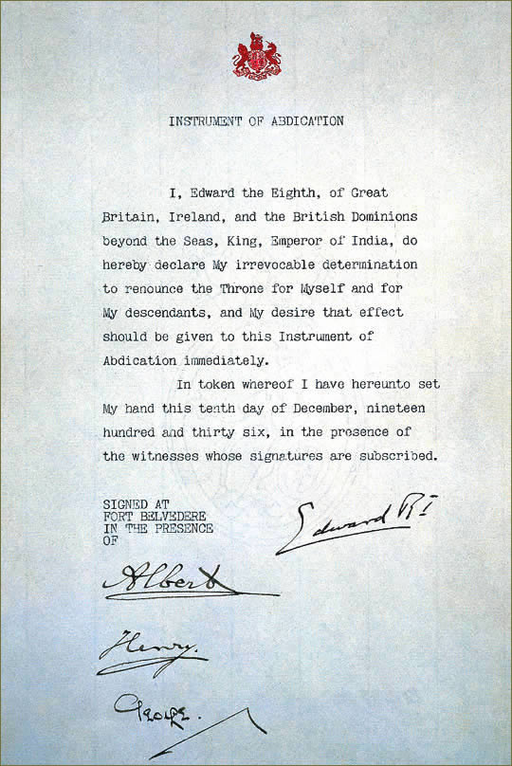
King George V1th
On 10th December 1936 the Abdication Proclamation was published and Bertie became King. His first act as King was to give his brother the title of a Royal Duke, H.R.H. the Duke of Windsor. Now destined to become King George V1 he moved to a role for which he had received little preparation and having previously led a quiet life one where he knew few of the major politicians, public men or church leaders. In those first few months he relied heavily on the Prime Minister, Baldwin, who advised him to meet these people and this he was gradually introduced to the movers and shakers of 1937. After Baldwin retired he was succeeded by Chamberlain who also supported and kept the King informed. King George had a supportive wife and a supportive mother, Mary, who was proud of this son who did what was asked of him. This support helped the King endure the attacks of people such as Archbishop Lang who was vindictive and publicly expressed his anger against the Kings brother, Edward.
A hurried coronation
King George V1 was crowned in May 1937, it was a coronation that had been originally planned for his brother. The coronation ceremony with the two pretty young princesses in attendance showed a growing pride and adulation in the Royal Family as an institution.
Growing concern in Europe
Politically things were growing very difficult in Europe. Britain had been following a policy of appeasement, especially after May 1938 when it was thought that a mild comment from the British government would stop the attack on Czechoslovakia. Just after this the King and Queen went to Paris where they were welcomed by crowds of French people and this trip cemented the entente cordial between the two countries. In September 1938 it seemed that a state of war would be declared but when Neville Chamberlain returned from Munich he carried an agreement confirming “peace in our time”. A peace that was very short lived.
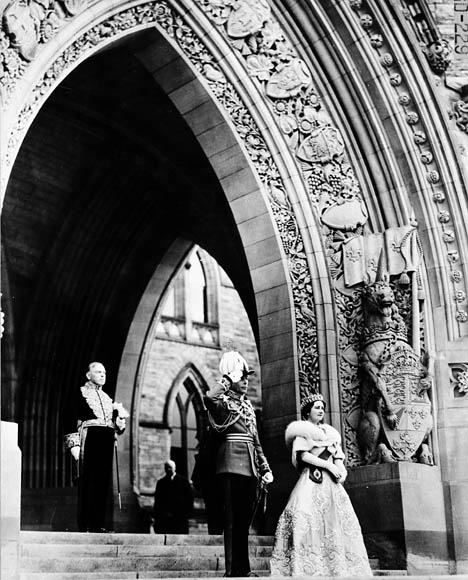
The Second World War
In March 1939 German troops occupied Czechoslovakia and one of the immediate thoughts was that with war imminent the Dominions should be made aware of the difficult conditions in Europe as their support would be needed in the event of a war. In May to June 1939 King George visited Canada and accompanied by the Canadian Prime Minister he met with President Roosevelt in Washington. The visit was a success in that Canada dropped any intentions of following an isolationist policy whilst in America the King showed his knowledge of the political situation in talks with Roosevelt. On 3rd September 1939 the King made his now well known radio announcement that Britain was at war.
A firm and united stand
King George knew that his role during the war would be more demanding. His family echoed the words of his broadcast, “I ask them to stand firm and united in this time of trial”. The King used the wireless, or radio as we know it, to reach out to the people, in their homes and his warm distinctive and affectionate style attracted support in many homes in the country.
The King could not travel because of the danger but he wrote many letters to foreign royalty defending Britain’s position. He even, in 1940, sent an appeal to Marshall Petain, head of the Vichy government in France, not to collaborate with the Nazi’s. As history would show, he was unsuccessful. George also rejected offers from Sweden to act as intermediaries in the war. He saw his duty as King to be the same as his father had fulfilled in the Great War, to advise, to encourage and to warn.
The Battle of Britain
Following Dunkirk and the retreat from France the first major air battle, the Battle of Britain took place in the summer of 1940. Hitler for some reason turned the attack onto London which had little in the way of defence, even the King’s home, Buckingham Palace did not have an air raid shelter. Although he had a royal bodyguard unit in case of a German guerrilla attack, he was in the same position as many families who did not have access to their own shelters. As the bombs fell, the King and Queen remained in London, visiting the bombed homes after raids and keeping spirits raised. During September the Palace was bombed twice, once near where the King and Queen were standing and they were severely shaken. Queen Elizabeth said, “I’m glad we’ve been bombed; it makes me feel I can look the East End in the face.” A new medal was minted, the George Cross and the George Medal to recognise the many acts of bravery and heroism by civilian workers. The medal ranks directly after the highest medal in the country, “The Victoria Cross”.
The Bombing of Coventry
After the bombing of Coventry in 1941 the King visited the city, even before the dead had been cleared, walking the streets all day talking and comforting its people. In doing this the King showed that it was recognised that it was not only the capital that was suffering. This visit was filmed and shown in cinema newsreels all over the country.
Relationships with America
The King kept good relationships with President Roosevelt throughout the early years of the war, writing to him regularly and congratulating him on his presidential election win in 1940. Relations warmed still further when the King insisted that Lord Halifax go to America as ambassador and King George personally welcomed the new American ambassador when his train arrived at Windsor station. Following the December 1941 attack on Pearl Harbour Britain was left heavily exposed in the Far East, fighting on two fronts. America joined the war and victory was ensured, although the time scales were not clear. The King and Prime Minister Churchill had a very good working relationship- they trusted each other, and initially formal audiences turned to relaxed weekly lunches.
Throughout the war King George supported the Kitchen front praising those like the Women’s Land army. This was not a glory job, the hours were long and it was cold and dirty. The royal family lived on rations, there is a story that when Mrs Roosevelt visited in October 1942 she stayed at the Palace with its huge bedrooms, fires unlit and ate rations, though off exquisite china and with silver cutlery!
Inspection Visits abroad
For a man in his position he was brave and courageous. In June 1943 he visited Allied troops in North Africa on a two week review of the units which were stretched over hundreds of miles of dry desert landscape. He met with the British generals and also Eisenhower, DeGaulle and Girard, inspecting British, American and Indian troops. From North Africa he sailed to Malta which was only sixty miles away from Axis forces in Italy. The King had given the island the George Cross for withstanding attack and deprivation in the previous two years, but he wanted to see the people personally and show that he recognised the sacrifices that they had been called to make.
As the victories started to roll in, the King was there, presenting medals and giving thanks to the troops. Just prior to D day he made another radio speech in which he asked for prayer that the allies night be able to liberate Europe. Forbidden to watch the landings because of safety fears, the King went to Normandy ten days after the landings and in July he went to Italy to review those troops. In October 1944 he journeyed to Holland to review Montgomery’s Twenty First army.
Victory in Europe
At home the King and Queen continued to support the people, especially when London w as hit by waves of flying bombs. On Victory in Europe Day, 8th May 1945, the Prime Minister and King lunched together and in the evening the whole Royal family appeared on the balcony eight times whilst the mall filled with densely packed crowds. For ever in touch with the feelings of his people, the King let Princess Elizabeth and Princess Margaret go out, suitably escorted to mingle and enjoy the crowds. At this point the King was exhausted, both physically and mentally from the strain of doing what he saw as his duty. The euphoria of Victory in Europe day was followed by Victory in Japan after the bombing of Hiroshima and Nagasaki where at least seventy thousand people died.
A change of Government
In between the two victories was the July General Election held at the insistence of the Labour party who demanded disassociation from the coalition government just as soon as Victory in Europe was achieved. The result was a landslide victory for the labour party and the King welcomed Attlee as Prime Minister. Initially the King found it hard to adapt to the new socialist government finding them difficult to talk to and instead of the friendly cordial lunches with Churchill he faced audiences with Attlee that were often punctuated by long silences. The King met other departmental ministers always reading before the meetings so that he was fully aware of the main issues, but by not having formal records taken, leaving the ministers the chance to speak freely to their King. The spectre of economic reconstruction after the war, worried the King who no doubt remembered the high levels of unemployment and subsequent depression after the First World War. After the war the amount of uncovered debt was £3,355 million (oh is that all we cry when our debt now is nearly a trillion). The year 1947 was hard- a hard winter- the worst that anyone could remember combined with a coal shortage, coal being the most used fuel to heat homes) and if you were hungry with the cold you could not fill up on cheap bread as it was on the ration. The King wrote of 1947 “I do wish one could see a glimmer of a bright spot anywhere in world affairs.”

International Relations
South Africa
After the war attention returned to the dominions or the new Commonwealth countries. The South African Nationalist party threatened to secede from the Commonwealth and was narrowly defeated in the South African parliament. A formal invitation was sent to the King to visit South Africa and accompanied by the Queen and his daughters he sailed to South Africa. Though he could not make much formal progress with the nationalists he was able to tour not only South Africa but also open the Southern Rhodesian parliament in Salisbury visit Zululand and journey east to the edge of the Kalahari Desert. It was in South Africa that a ceremony was broadcast to the people where Princess Elizabeth celebrated her 21st birthday and dedicated herself to the further duty that her role as Queen would involve. The Nationalists won the 1948 election but the visit may have helped keep South Africa in the Commonwealth. It was at this point that the nationalist government introduced its policy of apartheid which would not receive royal favour.
India
India presented an altogether larger problem. In 1942 Churchill had promised that India would receive Dominion status after the war. The King’s concerns were due to the problems in Indian self rule. The ruling party was Hindu, the Congress Party headed by Ghandi, but many of the Kings subjects were Muslim, how would they fare under a Hindu led government? This offer was rejected and the Congress leaders including Ghandi and Nehru were interned. Shortly after the end of the war the King received both Muslim and Hindu leaders at Buckingham Palace, yet the King confessed to close friends that he was worried that a civil war might ensue and he had seen more than enough of war in his lifetime. The King sent his cousin, Lord Mountbatten to India to wind up the Raj with peace and dignity if possible and as he was his close friend as well as relative the King had a keen involvement in the partition and liberation of India and Pakistan who wished to remain in the commonwealth even upon independence. The King’s title was changed, he was no longer Emperor of India, yet he took it all in his stride without objection, he knew as his father had known; that the monarchy would have to move with the times to survive. King George and the first Indian Prime Minister Nehru, met in October 1948 to try and solve their continuing membership of the commonwealth as a country that was part of the Commonwealth but did not recognise the King as its head of state. The meeting was warm, perhaps mirroring the warm relationship that Nehru had with Lord Mountbatten and within a year a solution was found that although King George was not head of state in India he was head of the Commonwealth and as head of the commonwealth all Indian peoples owed their allegiance to him. The Commonwealth was becoming a formative place, a place for nations to share ideas and voice opinions rather than just to hear what Britain and the King had said- this is a change in governance that King George recognised the need for and played a large part in attaining.
Marriage of the Princess Elizabeth
By 1950 the austerity of the war years was starting to be forgotten. Items such as clothing were now available off the ration and fruits such as bananas and oranges were now available in the shops. The King seemed to relax, in his early 50’s perhaps thinking of a job well done and began to enjoy society a little and treasure the moments with his family. He was a warm and loving father, attentive but disciplined when he had to be. Perhaps most of all he had instilled in both his daughters a dedication to the duty of the Royal Family that they had a public as well as a private existence. His eldest daughter Elizabeth was destined to succeed her father to the throne. She had met Prince Philip who was a cousin of the King of Greece in 1939 and their friendship continued throughout the war. The young couple wished to marry but the King suggested waiting as they were both in his opinion too young and the fact that Philip was not a British subject although he had fought in the war and had lived in Britain for most of his life with the Mountbatten family. However love won and despite the King’s misgivings on their age they were married in November 1947, a welcome colourful occasion for a post war austerity Britain. On their marriage, Philip who had renounced his Greek title was granted the title of His Royal Highness the Duke of Edinburgh.
A man of duty until his death
It is believed that King George never knew how ill he was, he was diagnosed with lung cancer and operated on in September 1951.. He helped her to learn about government letting her stand in for him at the Trooping of the Colour in 1949 and allowing her and the Duke to visit Canada in 1951. He was allowed a few years as a grandparent having a loving relationship with his daughter’s two eldest children, Charles and Anne. In 1951 a tour was arranged for Australia and New Zealand which a operation meant he had to abandon, thus the Princess set off with her husband leaving her father at home for the last time.
A sudden loss for the nation
George V1 died suddenly, but peacefully in his sleep on 5th February 1952. He had recovered from his operation of the previous year and had spent the day shooting hares on his Sandringham estate, a sport he enjoyed. His daughter received the news whilst on a pre tour holiday in Kenya and returned home as a sorrowful daughter but now the ruling monarch to follow the path of duty which her father had so clearly laid down for her.
Other articles on King George V1
- King George V1 and the Boy's camp - InfoBarrel
King George was responsible for the organisation of a number of boys camps which aimed to bridge the divide between rich and poor
